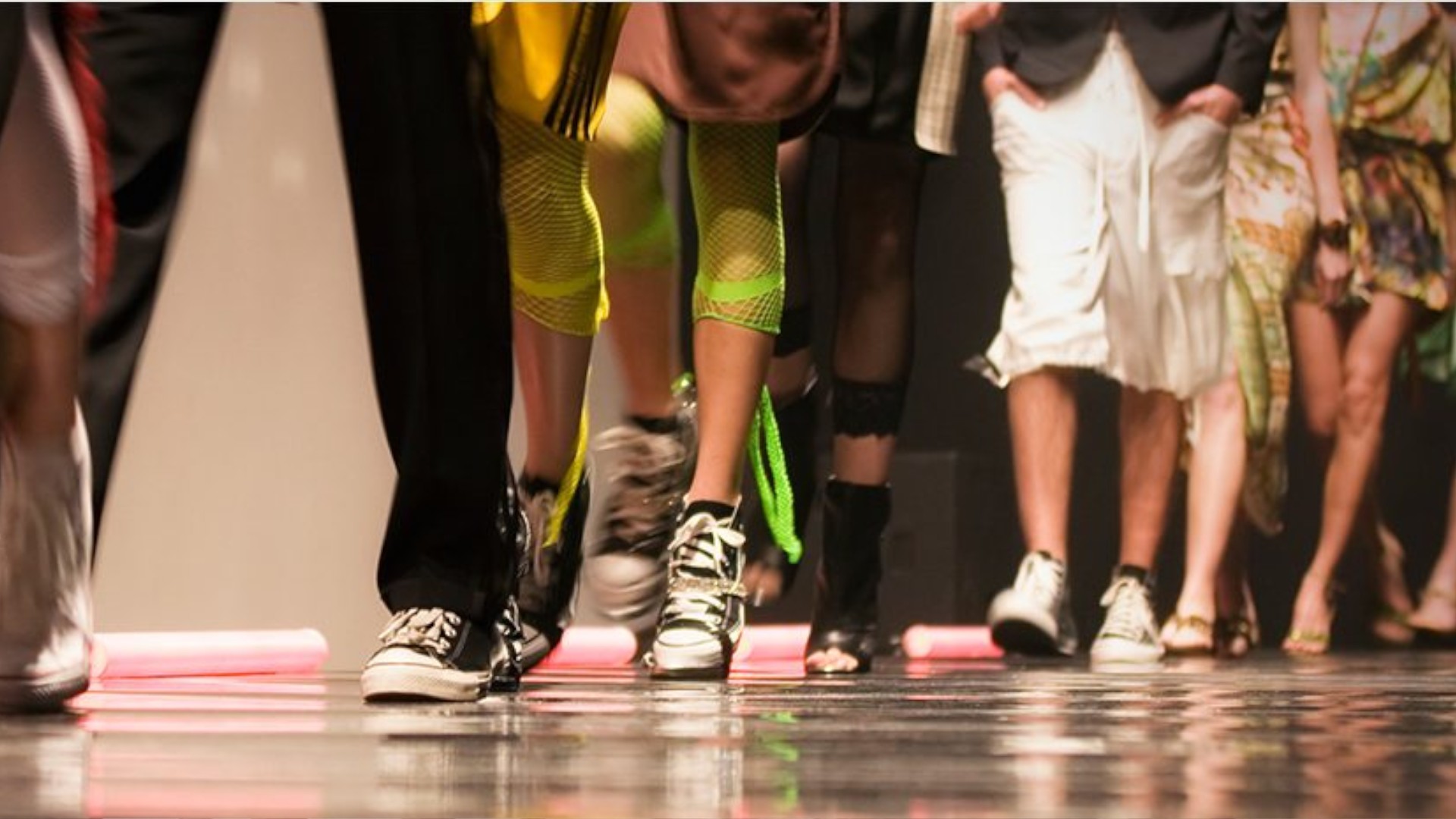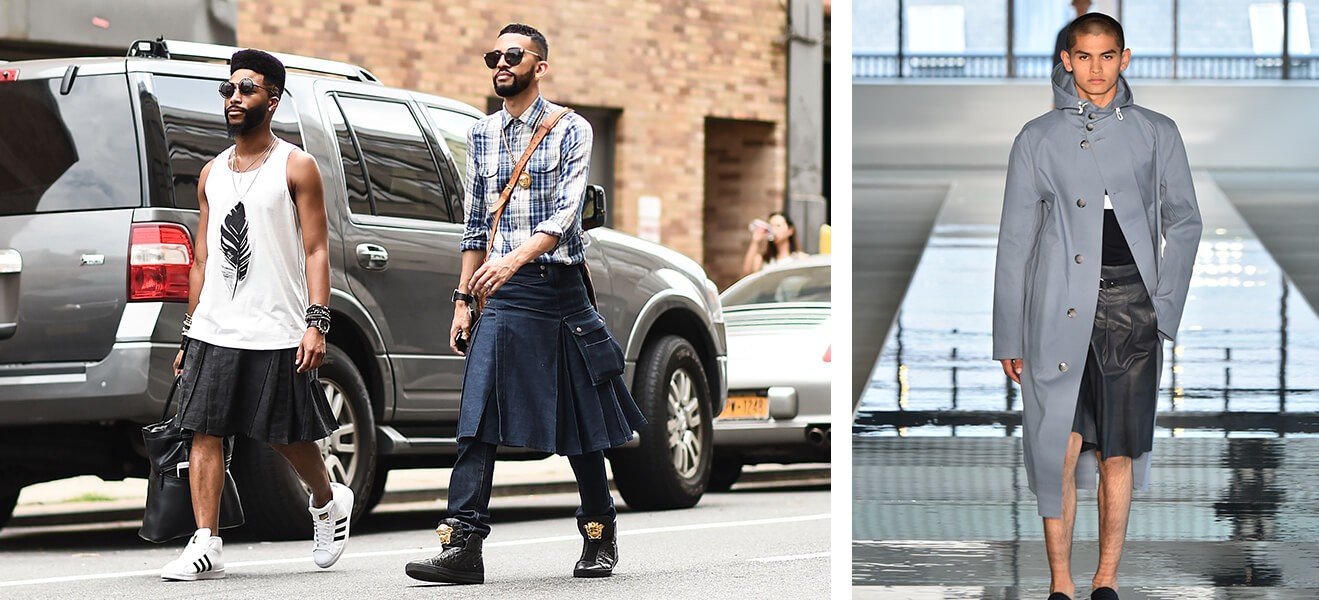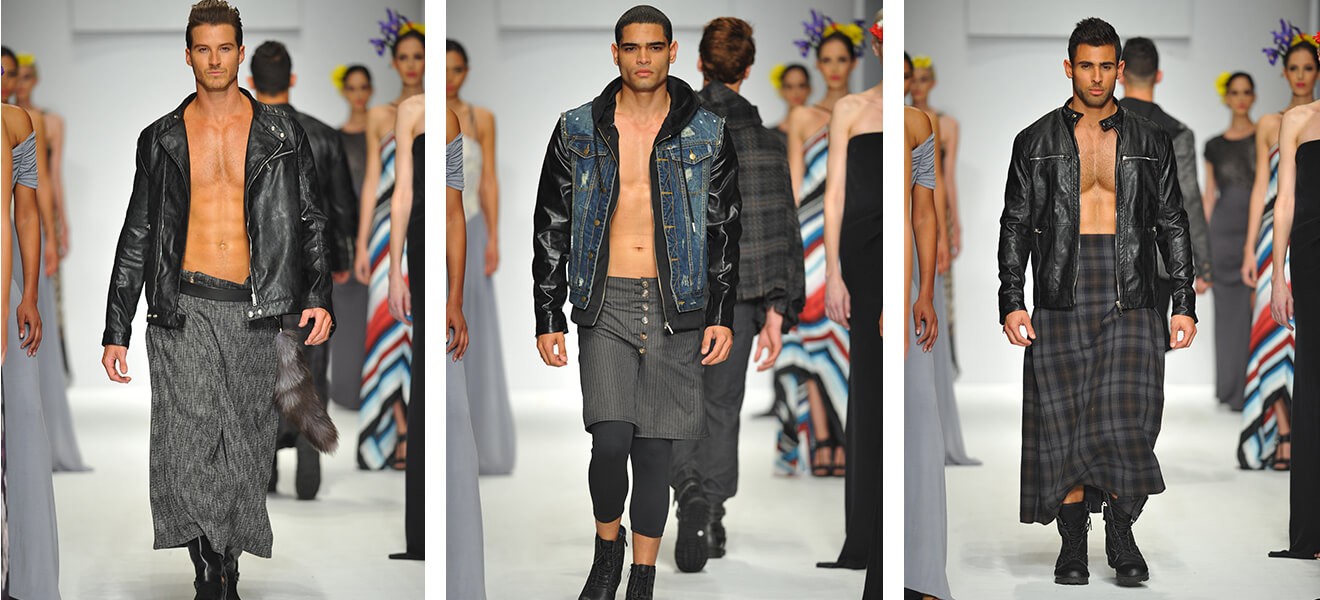Our tool for managing your permission to our use of cookies is temporarily offline. Therefore some functionality is missing.

WHO WEARS THE TROUSERS NOW?
We take a look at why the current wave of gender-fluid fashion is unique to our times.
Jaden Smith, the fashion-forward son of Hollywood A-listers Will Smith and Jada Pinkett Smith, appeared in an ad campaign for Louis Vuitton last year. He was wearing women’s clothing: a skirt, to be specific. And he looked pretty good. While his tall, skinny physique could be seen as a little androgynous (so a skirt wouldn’t look totally out of place as it would on, say, a rugby player), he was making no effort to pass as feminine. And didn’t look much like a drag queen or cross-dresser either. He was just a young guy in a skirt.
Waves of change
The advert signalled a major change in the world of fashion: the fading distinction between men’s and women’s clothing, a phenomenon that began on the catwalks a few years ago. For Gucci’s Autumn/Winter 2015 shows, designer Alessandro Michele had men and women walking the runway wearing clothes from the same line (Gucci has subsequently announced that it will no longer have separate shows for mens- and womenswear). British brand Burberry in 2016 also combined its men’s and women’s collections, mixing and matching items across gender lines.
High-street labels have been dabbling, too, with Spanish store Zara’s Ungendered collection, which consisted of 16 unisex items, among the first. UK department store Selfridges also tested the waters with a pop-up space they labelled “Agender”. So there is some mainstream traction for the idea; it’s not only something in the conceptual realm of haute couture.

THE CURRENT MOVEMENT IS DISTINCT FROM GENDER-SWAPPING IN THE REALM OF FASHION.
It’s not a gender-neutral thing
However, today’s cultural moment signalled by gender-fluid fashion is not to be confused with unisex or gender-neutral clothing that could work for either men or women without being able to tell the difference – for example, sports luxe gear like hoodies, sweaters and baggy pants. This trend has more to do with keeping the gender of the clothes intact, but with both genders wearing them.
So, what does it actually mean when men start wearing skirts? Kanye West and Jared Leto do it. But for rock stars, fashion is costume; a performance. Sometimes it’s intended to shock or draw attention. When Kurt Cobain wore a dress in the 90s, he was making a statement. The current cultural moment has something more in common with The Rolling Stones’s Keith Richards. In his autobiography, Life, he recalls how during his relationship with fashion icon Anita Pallenberg he would wear her clothes. “I would wake up and put on what was lying around,” he writes. “Sometimes it was mine, and sometimes it was the old lady’s, but we were the same size so it didn’t matter.”
Perhaps today’s gender-fluid fashion is a bit more like the way in which women appropriated menswear in the 70s and 80s as an act of empowerment. As women entered boardrooms, they adopted the uniforms of traditional masculine power to signal that they too were socially and economically empowering themselves. As women started wearing the trousers metaphorically, it aided literally, too. Fashion was being used to transform perceptions of gender as part of social mobility – to gain access to formerly male domains. But what social, economic or cultural mobility does a man have to gain from wearing a skirt?
Burberry’s September 2016 show was inspired by Tudor fashion, with reference to British author Virginia Woolf’s 1928 novel, Orlando, about an immortal aristocrat whose gender shifted throughout the ages. The historical and literary reference associated with this particular Burberry show seemed to suggest that fashion was looking at its own history – that the gender roles assigned to certain fashion items like shirts with frills or skirts were different at different times in history – to find ways to undermine modern gender distinctions.
AUSTRALIAN MODEL ANDREJA PEJIC WAS THE FIRST COMPLETELY ANDROGYNOUS MODEL IN THE FASHION INDUSTRY BEFORE HAVING SEX REASSIGNMENT SURGERY. SHE IS NOW ONE OF THE MOST RECOGNISABLE TRANSGENDER MODELS IN THE WORLD.

What’s male is female
The current movement is also distinct from even very recent gender-role swapping in the realm of fashion. A few years ago, there was a lot of talk about the likes of Casey Legler, a French former Olympic swimmer (and woman), whose handsome features saw her modelling men’s clothes. And, on the flipside, someone like Australian model Andrej Pejic – a man who has since undergone gender transformation – modelled women’s clothes.
The difference then was that one was a woman who could pass as a man, and the other a man who looked like a woman. They were gender-swapping; proving they could slip between genders. But Jaden Smith is not pretending to be a woman, he’s still just a guy in a skirt. The clothing is either identifiably men’s or women’s. The difference is that they’re worn by the opposite gender from the one for which they were conventionally intended.
What sets apart our most recent engagement with fashion’s gender codes is that it seems to actually disconnect gender and fashion. The whole range of fashion’s conventions are available to anyone of either sex. Rather than changing perceptions of masculinity, the message seems to be that masculinity can stay intact, even if a man wears a skirt. The contrast between the masculinity of a guy in a blouse and his blouse is what matters. It’s the tension between opposites that defines today’s gender fluidity, not that the differences are eroded or meet on a neutral middle ground.
We live in an era of opposites and extremes – socially, politically, economically. That’s the spirit of our times. As always, fashion mirrors that.


